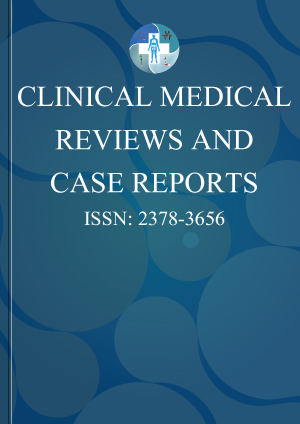Open Access DOI:10.23937/2378-3656/1410052
A Case of Psoriasis in an HIV Positive Male
Omar F Merchant and Wayne X Shandera
Article Type: Case Report | First Published: August 29, 2015
Patients with Human Immunodeficiency Virus (HIV) infection have an increased risk for several variants of psoriasis as well as being refractory to standard treatment regimens. While psoriasis does not affect HIV survival, quality of life may be significantly impaired and these considerations warrant special attention with management. We report a case of psoriasis in a 43-year-old Hispanic male with HIV infection, adequately managed with antiretroviral therapy. He presented with chronic and persi...
Open Access DOI:10.23937/2378-3656/1410051
Mycotic Aneurysm of Native Renal Artery: Case Report and Review of the Literature
Arru Luca, De Magistris Luigi, Arendt Charlie, Pillet Jeanchristophe, Azagra Juan Santiago, Goergen Martine and Pouthier Dominique
Article Type: Case Report | First Published: August 28, 2015
Introduction: Renal native artery is an uncommon localisation of mycotic aneurysm that involves most frequently the artery of renal transplant in immuno-suppressed patients. Septic embolization often occurs during endocarditis and direct infection could complicate endovascular procedures with device placing.
Case report: We herein describe the case of a leaking mycotic aneurysm of the native renal artery (MANRA) in a renal transplanted patient, successfully treated by open aneurysmectomy and ...
Open Access DOI:10.23937/2378-3656/1410050
General and Oral Aspects in Apert Syndrome: Report of a Case
Villarreal-Becerra Einer, Luis Sanchez-Soler, Angel Espias-Gomez, Leonard RH Jr, Julio Herrero-Payo and Eduardo Chimenos-Kustner
Article Type: Case Report | First Published: August 26, 2015
Background:The present paper describes the general and oral manifestations in a 32-year-old man previously diagnosed with Apert syndrome. Clinical examination revealed features of acrocephalosyndactyly. The patient was found to have a flattened occiput with frontal prominence, abnormal contour of head (brachycephaly), shallow and downward slanting orbits with bilateral proptosis, hypertelorism, retruded midface, and prognathic mandible.Dental anormalies were present in a patient....
Open Access DOI:10.23937/2378-3656/1410049
Sural and Radial Sensory Responses in Patients with Sensory Polyneuropathy
Ying Guo, J Lynn Palmer, Xun S Brown and Jack Fu
Article Type: Review Article | First Published: August 21, 2015
The amplitude of Sensory Nerve Action Potentials (SNAPs), as an indicator for the amount of peripheral sensory nerve axon, is important in the diagnosis of peripheral neuropathy. Since the sural and radial nerves are at low risk for compressive injury, the sural and radial SNAPs are especially useful in the electrodiagnosis of polyneuropathy....
Open Access DOI:10.23937/2378-3656/1410048
Hepatic Arterioportal Fistulae: Two Case Reports and Review of the Literature
Thanh Tran, Marc Burrell and William M. Lee
Article Type: Case Report | First Published: August 20, 2015
Hepatic arterio portal fistulae are inappropriate connections between the hepatic artery and portal vein and are obscure causes of acquired portal hypertension. There have been a small number of cases reported since it was first described in 1892 by Sachs. These fistulae can cause significant morbidity and mortality as a result of the portal hypertension, but unlike cirrhosis, are potentially curable. Therefore, early diagnosis and treatment is important. The two cases presented here illustrate ...

